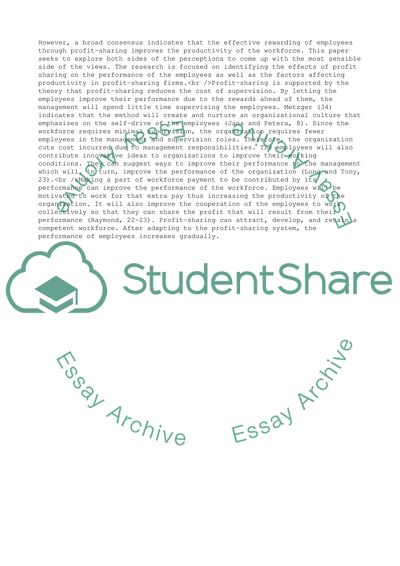Cite this document
(Does Profit Sharing Effect Productivity Coursework Example | Topics and Well Written Essays - 1500 words, n.d.)
Does Profit Sharing Effect Productivity Coursework Example | Topics and Well Written Essays - 1500 words. https://studentshare.org/business/1849198-does-profit-sharing-effect-productivity
Does Profit Sharing Effect Productivity Coursework Example | Topics and Well Written Essays - 1500 words. https://studentshare.org/business/1849198-does-profit-sharing-effect-productivity
(Does Profit Sharing Effect Productivity Coursework Example | Topics and Well Written Essays - 1500 Words)
Does Profit Sharing Effect Productivity Coursework Example | Topics and Well Written Essays - 1500 Words. https://studentshare.org/business/1849198-does-profit-sharing-effect-productivity.
Does Profit Sharing Effect Productivity Coursework Example | Topics and Well Written Essays - 1500 Words. https://studentshare.org/business/1849198-does-profit-sharing-effect-productivity.
“Does Profit Sharing Effect Productivity Coursework Example | Topics and Well Written Essays - 1500 Words”. https://studentshare.org/business/1849198-does-profit-sharing-effect-productivity.


